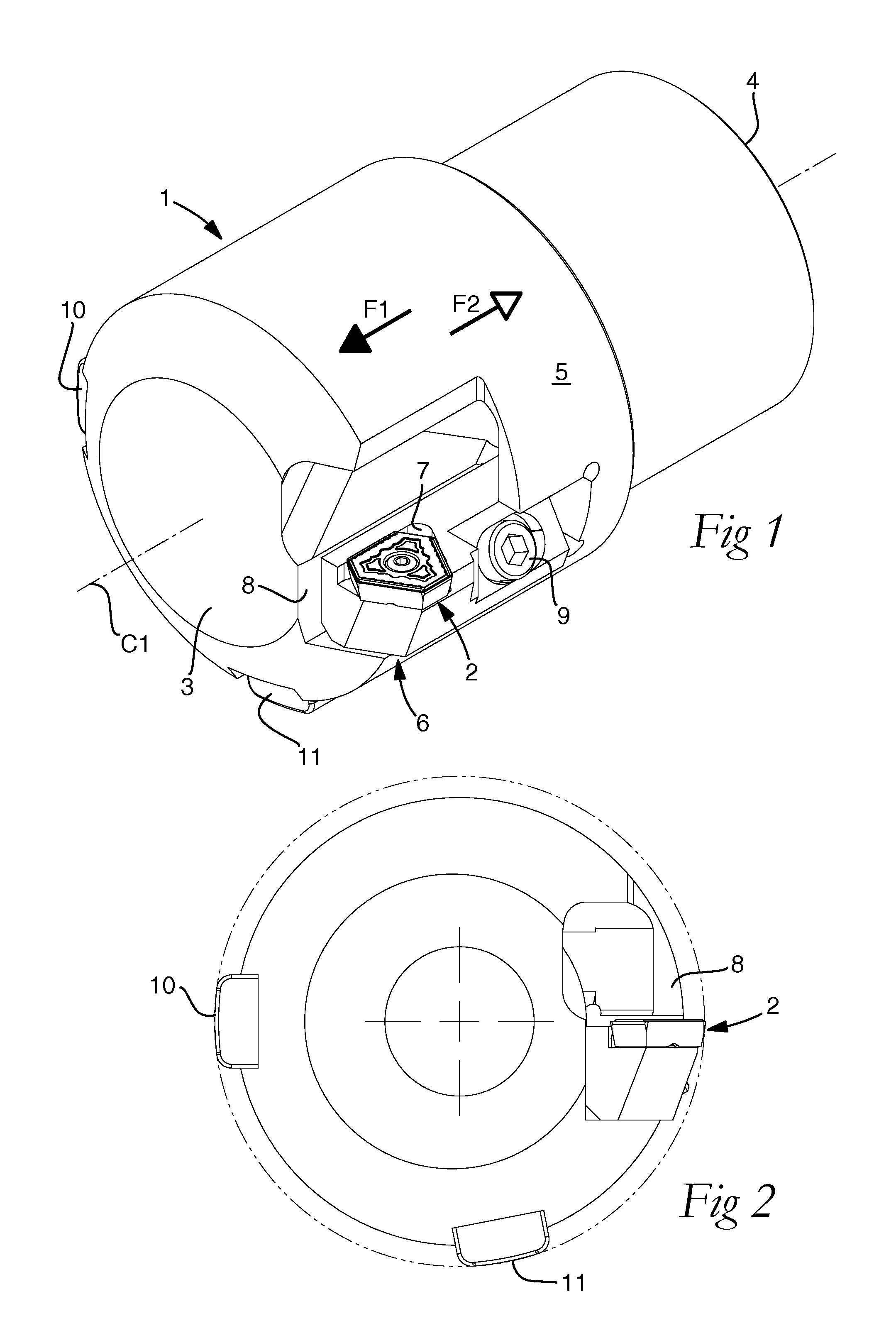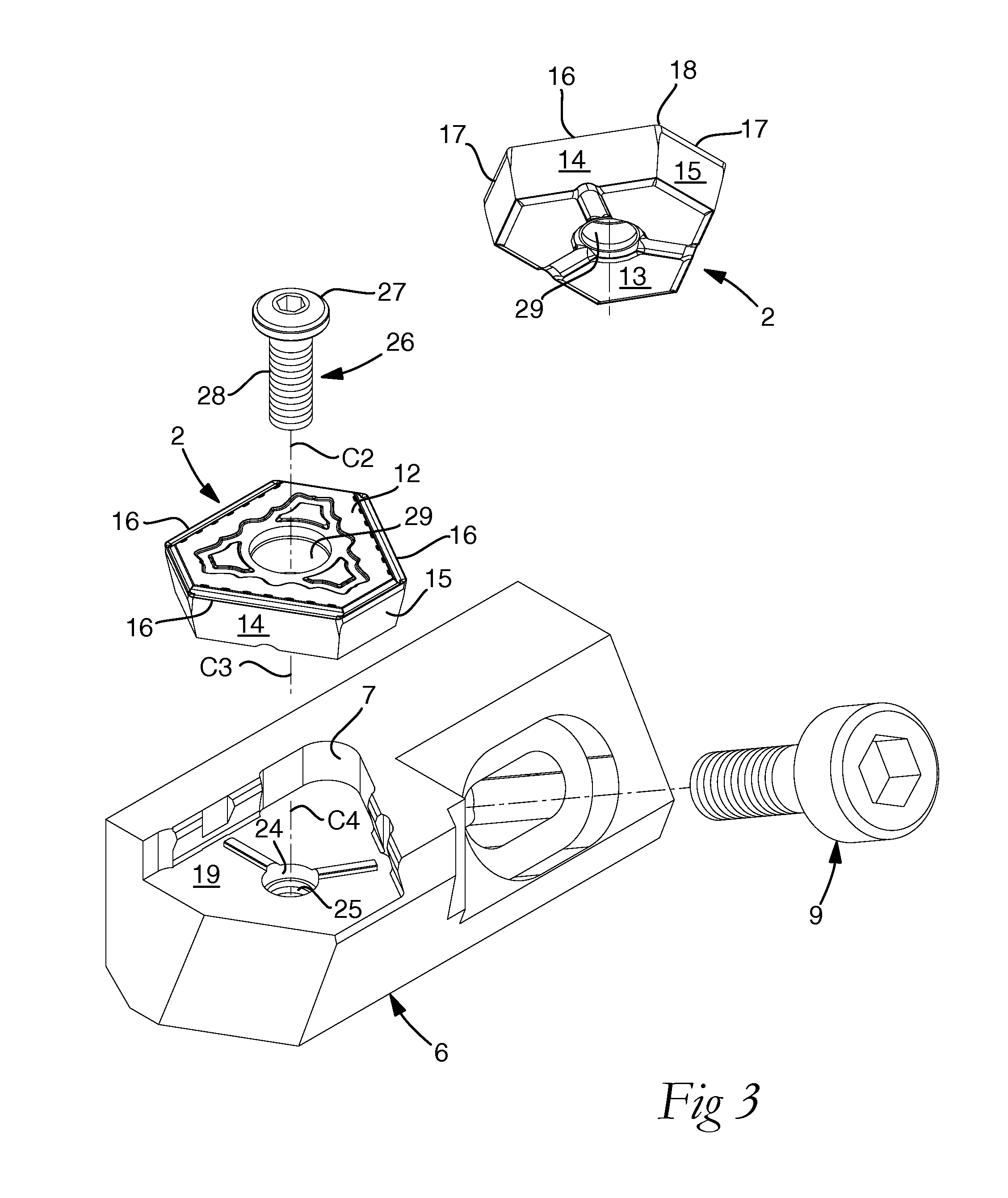Hole-making tool
a tool and hole technology, applied in manufacturing tools, cutting inserts, transportation and packaging, etc., can solve the problems of affecting the quality of the tool, the need to retract the tool through the machined hole, and the damage to the surrounding hole surface, so as to avoid the need for removing the tool from the hol
- Summary
- Abstract
- Description
- Claims
- Application Information
AI Technical Summary
Benefits of technology
Problems solved by technology
Method used
Image
Examples
Embodiment Construction
[0027]In FIGS. 1 and 2, a hole-making tool is shown in the form of a reamer, which includes a head 1 and a replaceable cutting insert 2. The head 1 includes front and rear ends 3, 4 between which a center axis C1 of the tool extends, with which a rotationally symmetrical envelope surface 5 is concentric and on which the head can, if required, be rotated. To the head 1, a cassette 6 is detachably connected, in which a seat 7 for the cutting insert 2 is formed. The cassette 6 is mounted in a pocket 8 that is countersunk in the envelope surface 5 and opens in the front end of the head. The cassette 6 is held fixed in the pocket by means of a bolt 9. As shown in FIGS. 1 and 2, a pair of support and guide pads 10, 11 are tangentially spaced-apart from the solitary cutting insert 2, in order to, together with the same, provide a three-point support for the tool during the reaming of a (pre-drilled) hole, which is indicated by means of a dash-dotted circular line in FIG. 2. In FIGS. 1, F1 ...
PUM
| Property | Measurement | Unit |
|---|---|---|
| angle | aaaaa | aaaaa |
| angle | aaaaa | aaaaa |
| angle | aaaaa | aaaaa |
Abstract
Description
Claims
Application Information
 Login to View More
Login to View More - R&D
- Intellectual Property
- Life Sciences
- Materials
- Tech Scout
- Unparalleled Data Quality
- Higher Quality Content
- 60% Fewer Hallucinations
Browse by: Latest US Patents, China's latest patents, Technical Efficacy Thesaurus, Application Domain, Technology Topic, Popular Technical Reports.
© 2025 PatSnap. All rights reserved.Legal|Privacy policy|Modern Slavery Act Transparency Statement|Sitemap|About US| Contact US: help@patsnap.com



